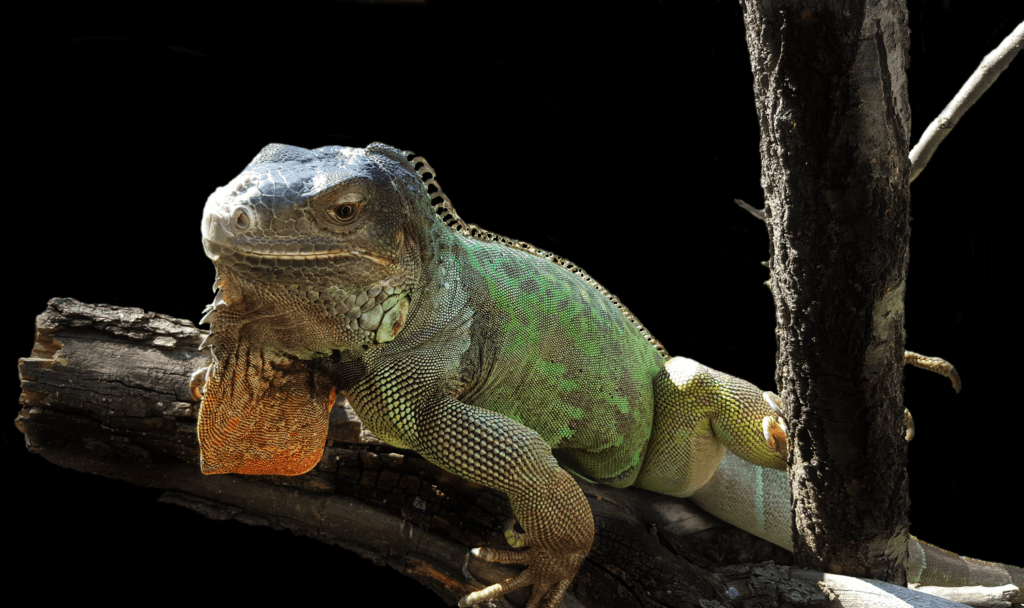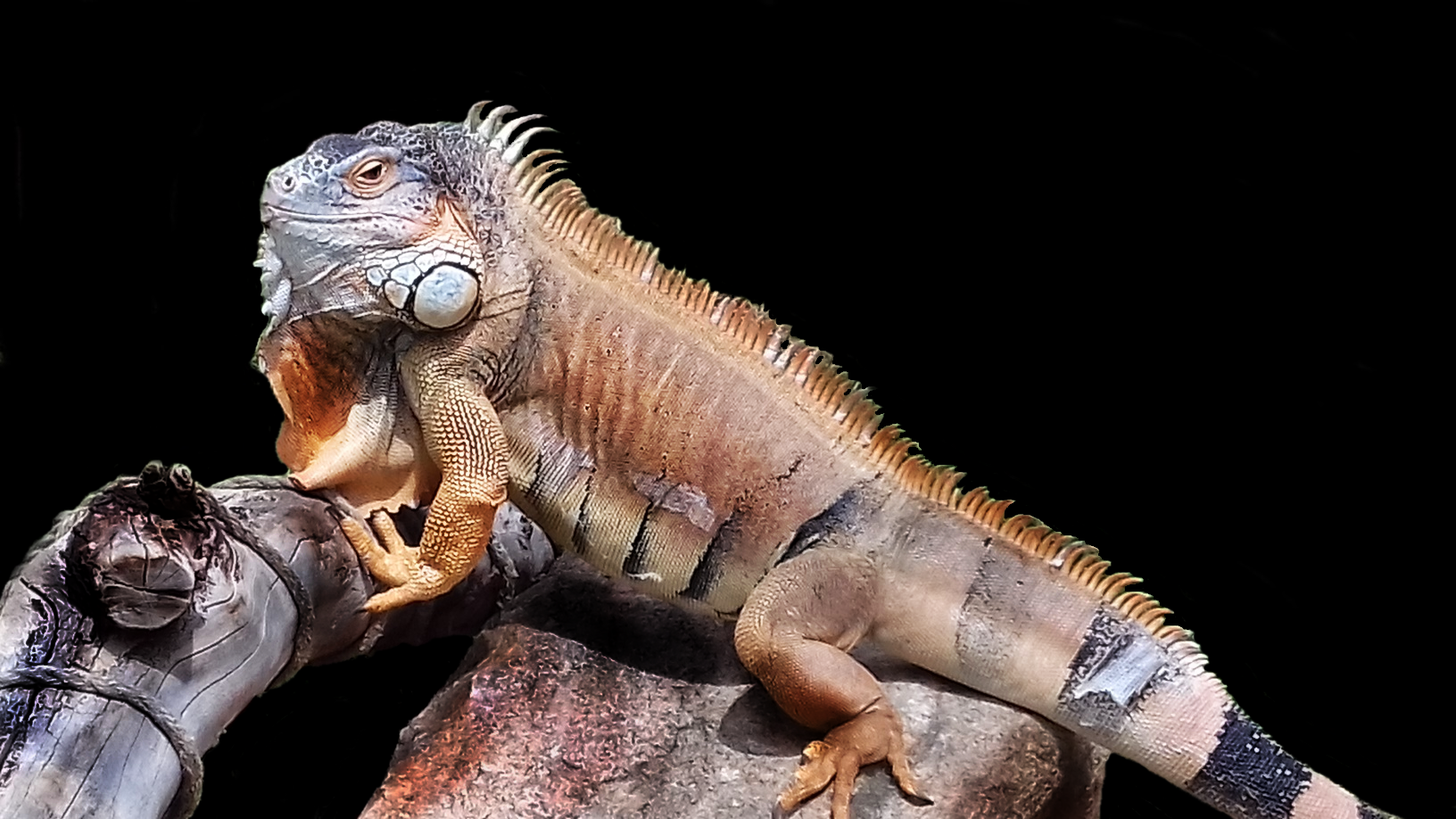Iguanas are well-known and are generally well-liked among the human population. However, unless you are a lizard lover or basically an iguana lover, there are some things you may not know about these interesting creatures. Listed below are some facts about iguanas that you may not know…
One of the most common reptiles found in South and Central America is the green iguana. Several breeds can be seen in Mexico, Paraguay, Brazil, and the Caribbean Islands.
How big do the green iguanas get? For starters, these reptiles can grow anywhere from four to six feet long although some have managed to get up to seven feet in length. The tail of the iguana is almost half of its body, taking up more than half that length.
Did you know that they use their tails to sense when predators are nearby and if they lose their tails when babies, they will grow back as if it never happened? However, it won’t grow back to the same size or the same color.
An iguana that is living in captivity can live up to and even more than 20 years. This happens only if the iguana has been taken very good care of.
The male iguana has what is called dewlap on the chin. What is a dewlap? It is a special flap used to attract female green iguanas. It can also be used to intimidate the predators that would attack them. The dewlaps help the iguanas appear as if they are much bigger than they really are.
They can keep fat under their necks and jaws for when times are rough and there is not much food to eat.
Iguanas are not carnivores but rather herbivores. This means they Eat fruits and vegetables such as tree leaves and flowers.

These are also called common iguanas. Many people would like to have one as a pet because they are so common. Calling them a green iguana can oftentimes be a mistake because they can be a brown color too.
Green Iguanas can be found in parts of South and Central America, some Pacific Islands including Guam, and the state of Florida in the United States.
What is sad is the green iguana is renowned as a threatened species because the habitat it lives in is slowly disappearing.
Iguanas Are Trainable.
For those who think iguanas would be nice to have but are pretty stupid, you might be surprised to learn that iguanas are just as smart as a dog or even a cat. An iguana can be taught to do things like human beings. Some people have taught their pets to use the bathroom while others have trained their iguanas to do many tricks. If lost, some iguanas can find their way home.
This is just to show you that even reptiles can learn things, provided their trainers take the time to teach them.
Iguanas take a liking to their owners
Interaction between pet owners and their iguanas is simpler than with other pets like snakes and lizards. As an indication that they grow fond of their owners, some iguanas have been known to sleep next to their owners. They may also become calm upon being held but would act aggressively towards strangers, whom they may even bite.
Few people are allergic to iguanas as they lack fur or hair. Patients with asthma don’t have to worry about a pet iguana as they are clean and don’t harbor particles that could trigger the onset of an asthma attack.

Physical Appeal
The iguana is a beautiful creature to observe. Its tail is longer than its body and is sometimes used when defending itself from predators. It has a large round body. It interacts with others by whipping its powerful tail and bobbing its head. Furthermore, it has a sharp sense of smell, good hearing, and an acute vision
Iguanas constitute the largest section of the lizard family. It is by far the most common and popular reptile. Their characteristics such as laying eggs are common to reptiles. Furthermore, their cold-blooded nature allows them to easily adapt to their environments.
The different types of iguana species vary greatly in characteristics.
They differ in size, behavior, and even color. However, they are an endangered species in the wild. The green iguana and red iguana are the more familiar of the iguanas and are also still present in very large numbers.
However, the Brachylophus vitiensis and the Fiji Island iguana are becoming endangered species. It is hard to discern different species of iguana as being from the same family due to large differences in physical appearance as well as behavior. Their colors vary from bright to muted shades. The different habitats in which iguanas can be found give each species a different adaptation.
Americans believe the extinction of the iguana species can be prevented by keeping them as pets domestically. Furthermore, the correct handling and care of iguanas is fundamental knowledge. This includes knowledge of their eating habits, their habitat, and other information relating to their upkeep.
Conversely, some of the dangers iguanas undergo vary from loss of their habitat to captivity by man for consumption. The survival of the iguana can be aided by taking measures such as educating people who live in iguana habitats and imposing limitations on hunting and the breeding of iguanas in zoos.
